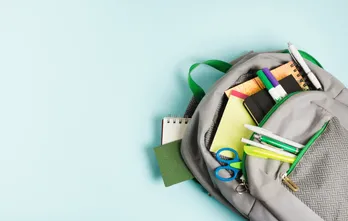Starting a new school year can be an exciting time for students and parents alike, but it also comes with the added expense of purchasing school supplies. The cost of textbooks, notebooks, pens, pencils, binders, and other essentials can add up quickly, putting a strain on family budgets. However, there are several ways to get free or low-cost school supplies that can help alleviate some of the financial burden. In this article, we will explore various methods for acquiring free or discounted school supplies, from community resources and school programs to creative DIY solutions.
Check with Your School or District
The first place to look for free or reduced-cost school supplies is your child's school or district. Many schools have programs in place to help families in need. Here are some ways you might be able to get free school supplies through your school:
1. Application for Assistance
Contact the school office and ask about any assistance programs that may be available. Some schools offer supply kits or vouchers for students from low-income families or those with demonstrated financial need. Be prepared to provide proof of income or other documentation if required.
2. School Supply Drives
Schools often hold supply drives during the summer months or at the beginning of the school year, where community members and businesses donate new or gently used supplies. Keep an eye out for announcements in local papers, on social media, or through your child's teacher or school office.
3. Community Eligibility Provision (CEP) Schools
If your child attends a CEP school, they may be eligible for free meals and other benefits, including free school supplies. Check with the school office to see if this applies to your situation.
Explore Local Community Resources
There are various community organizations and resources that offer free or discounted school supplies to families in need. Here are some places to look:
1. Non-profit Organizations
Reach out to local non-profits, such as United Way, Boys & Girls Clubs, Salvation Army, or your local church or temple. Many of these organizations have programs in place to provide school supplies to families who cannot afford them.
2. Local Businesses
Some businesses, particularly office supply stores and stationery shops, may offer discounts or promotions on school supplies for customers in need. Ask at your local store or check their websites for more information.
3. Public Libraries
Many public libraries have a limited selection of school supplies that can be borrowed by students. Check with your library to see what they offer and if you need to reserve the items in advance.
Get Creative with DIY Solutions
If you're unable to secure free or discounted school supplies through the above methods, consider getting creative with DIY solutions. Here are some ideas:
1. Upcycling
Turn old items into new school supplies by upcycling them. For example, transform an old three-ring binder into a stylish cover using wrapping paper or fabric. Use empty two-liter bottles as water bottle holders or pencil caddies. Get inspired by searching "upcycled school supplies" online for more ideas.
2. School Swap
Organize a school supply swap with other parents in your neighborhood, community center, or through social media platforms like Facebook. Ask everyone to bring gently used supplies they no longer need and leave with supplies that will be useful for their own children. This not only helps reduce the cost of new supplies but also keeps reusable items out of landfills.
3. DIY Notebooks
Create your own notebooks using old magazines, phonebooks, or even free printables found online. Simply hole-punch the pages and slip them into a binder or folder for a personalized and eco-friendly alternative to store-bought notebooks.
Frequently Asked Questions
Q: How can I find out if my child's school offers free or reduced-cost school supplies?
A: Contact your child's school office and ask about any assistance programs that may be available, such as supply kits or vouchers for students from low-income families or those with demonstrated financial need.
Q: What community organizations offer free or discounted school supplies?
A: Reach out to local nonprofits, such as United Way, Boys & Girls Clubs, Salvation Army, or your local church or temple, to inquire about any available programs. Also, check with your public library for borrowable school supplies.
Q: What businesses offer discounted school supplies?
A: Contact your local office supply stores and stationery shops to ask about any promotions or discounts they may offer for customers in need.
Q: How can I organize a school supply swap with other parents?
A: Reach out to other parents in your neighborhood, community center, or through social media platforms like Facebook, and suggest organizing a school supply swap where everyone brings gently used supplies and leaves with supplies they need for their children.
Q: What are some creative DIY solutions for school supplies?
A: Consider upcycling old items into new school supplies, such as turning an old three-ring binder into a stylish cover using wrapping paper or fabric, or transforming empty two-liter bottles into water bottle holders or pencil caddies. Additionally, creating your own notebooks using old magazines, phonebooks, or free printables found online can save money and reduce waste.
Q: What is the Community Eligibility Provision (CEP) program?
A: The Community Eligibility Provision (CEP) is a program that provides free meals to students in schools where at least 40% of enrolled students come from low-income families. Some CEP schools also offer additional benefits, such as free school supplies for eligible students. Check with your child's school office to see if they participate in this program.
Conclusion
Starting the school year with the right supplies can help ensure your child's success in the classroom. However, the cost of these essentials can be a significant burden for some families. By exploring various resources for free or discounted school supplies, getting creative with DIY solutions, and being proactive in seeking out available assistance programs, you can significantly reduce the financial impact on your family budget while still providing your child with the tools they need to succeed. Remember, it's important to reach out to your school or community resources as early as possible, as availability may be limited and supplies go quickly.











